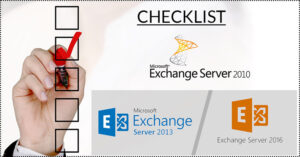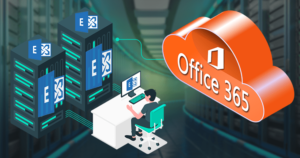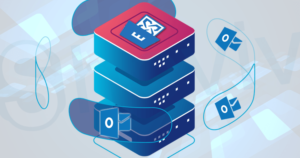Storage issues are common and can be easily fixed by deleting some data to reduce Exchange mailbox size. But what if the size remains the same even after deleting some of the data from the Exchange database? Then, this issue becomes significant, and users need to take action as soon as possible. So, we advise users to defrag the Exchange mailbox database to fix this issue. Defragmenting the mailbox database will help users remove white space or unused storage and improve database performance.
Users can face various problems, like taking longer to load emails, slowing down the performance, etc., if they wait to fix it. So, understand the method shared in this blog to improve Exchange performance and fix the storage issue.
What is Offline Defragmentation, and when is it necessary?
Offline Defragmentation is the process that helps users reorganize the mailbox data to remove white space from the database. Moreover, it also provides the facility to smooth Exchange performance and avoid storage-related issues. Let us share when users should defrag Exchange mailboxes to optimize storage utilization better.
- If the emails take too long to load or open, you must look towards defragmenting the Exchange database mailbox.
- When we are constantly deleting old emails regularly, it can fragment the mailbox data. However, we need to remove the white storage from the database.
- Sometimes, users upgrade to a new storage system. That is the best time for users to defrag Exchange mailboxes and work smoothly.
A stepwise guide to process the Offline Defragmentation
To perform the Offline Defragmentation process, we are going to use the PowerShell commands. Users can follow the steps and commands below to perform this task effectively.
Important Points:
- Before performing the steps, kindly back up the mailbox database to avoid unexpected issues.
- Also, ensure the server disk has ample space to perform the defragmentation process efficiently.
- Additionally, check that you have the required administrative rights on the server where you installed Exchange Server to process Defragmentation.
Steps to Defrag Exchange database mailboxes
We will share the steps that users must perform to complete the Exchange database mailbox defragmentation process.
Step 1: Firstly, we will dismount the mailbox database using the PowerShell command.
- Open the Microsoft Exchange Management Shell in your system.
- Run the PowerShell command shared below.
Command: Dismount-Database -Identity <DatabaseName>Step 2: Keep a backup of the original EDB file to a safe location.
Step3: In this step, we will perform the Offline Defragmentation process.
- Open up the command prompt to begin Defragmentation.
- Thereafter, move to the location where Eseutil.exe is stored.
- Run the below command to defrag the MS Exchange database mailbox.
Command: eseutil /d <Path to current EDB file> /t <Path to temp folder> /pStep 4: The defragmentation process can take a bit longer to complete, so wait till the process is finished.
Step5: Here, you have to mount the Microsoft Exchange mailbox database by running the below command.
Command: Mount-Database -Identity <DatabaseName>Step 6: When the EDB file gets mounted, you must check the integrity of the database using the following command.
Command: eseutil /g <Path to defragmented EDB file>After completing the steps, ensure the database has been defragmented successfully by monitoring the database performance.
Why choose Shoviv Software?
Shoviv Software is one of the world’s top-leading organizations. It offers numerous tools to help users recover emails, back up, migrate, etc. If you have any issues related to the EDB file, such as corruption, or are looking to keep a backup of the data, you can use its Exchange Recovery Manager Tool. It also provides other features to ease Exchange migration, EDB recovery, and other tasks. Users can easily save their Exchange database into PST, EML, MSG, and other file formats using this tool.
Moreover, this software has a variety of features to make the process as easy as a cakewalk for each user. Besides this, Shoviv professional tools are easy to access for all users, as these solutions come with a simple user interface.
Wrapping Up
This post shares a method to perform the Exchange mailbox database defragmentation process. This solution helps users complete the defragmentation process quickly using the PowerShell commands. However, remember that you should keep a backup of the EDB file before performing this process. For a professional solution to manage your Exchange Server tasks, such as backup, migration, and EDB recovery, you can also choose Shoviv Exchange Recovery Manager. Also, you can try its free demo version in your system and process the first 50 items per folder freely to check its efficiency.
Also Read
- How to Properly Decommission an Exchange Server?
- A Guide to Enable/Disable Exchange Server Maintenance Mode
- What is Microsoft Exchange ActiveSync and does it Work?
- Know How to Prevent Exchange Server from Downtime?
- How to Open an EDB file Without Microsoft Exchange Server?
- How to Recover Deleted Exchange Mailbox Effortlessly?
- How to Stop the Exchange Server from Recreating Meetings?
- What is a Microsoft Exchange Account? – A Complete Guide
- How to Backup and Restore Emails in Webmail? - March 25, 2025
- How to Migrate Outlook to New Computer? - February 15, 2025
- Fix If Outlook Cannot Display the Specific Folder Location - February 1, 2025


